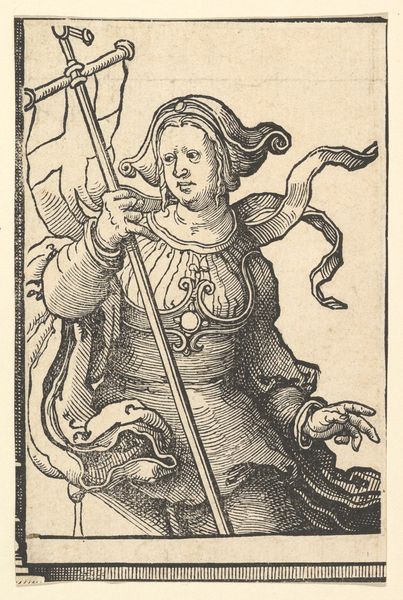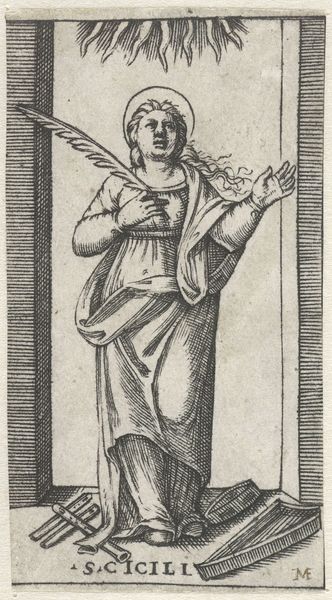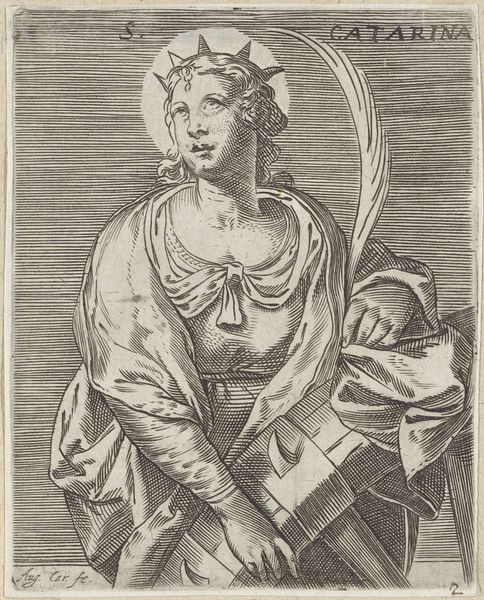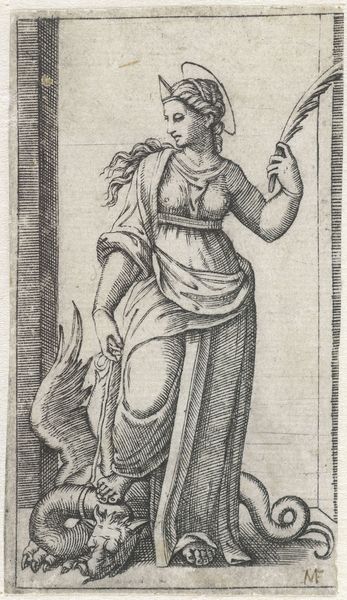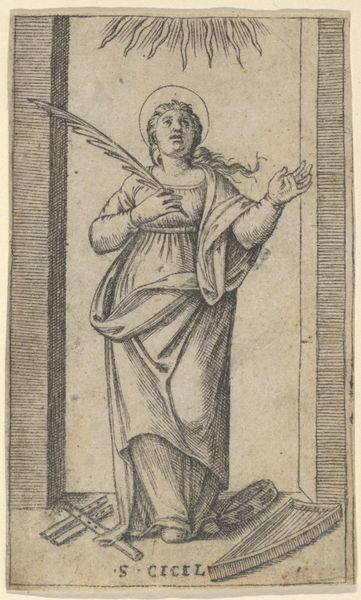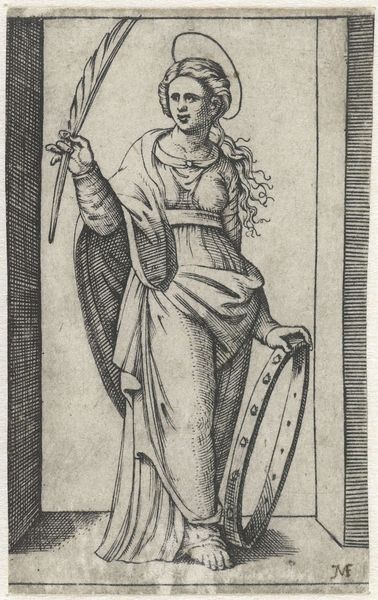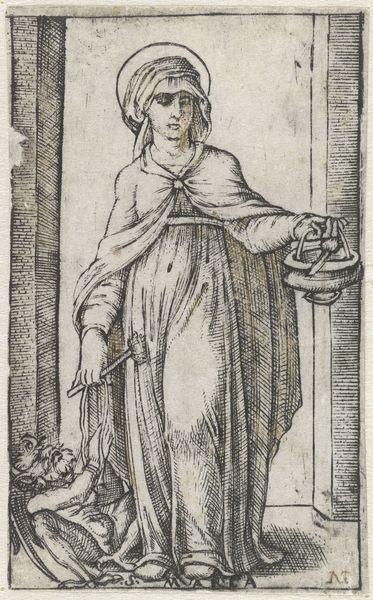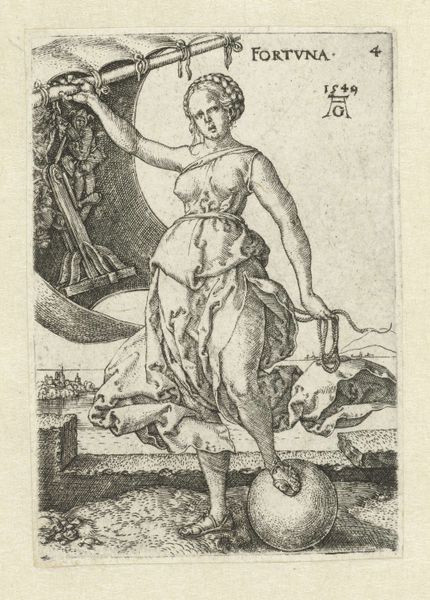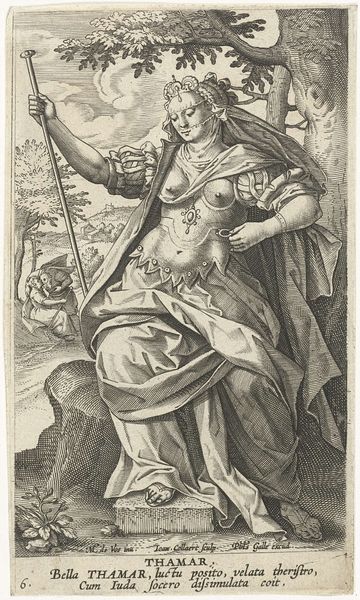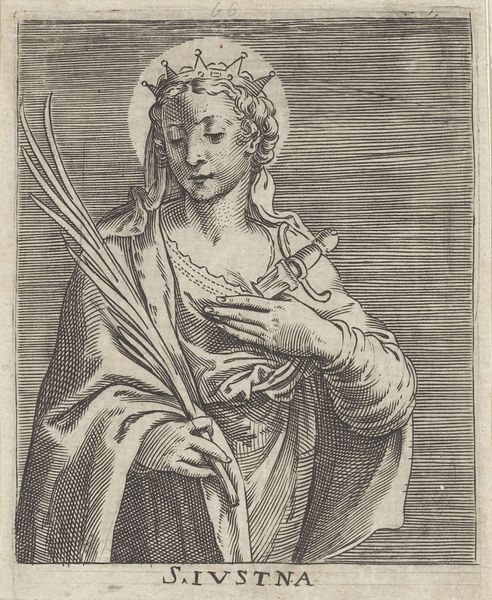
European Sibyl, from the series of Sibyls 1525 - 1535
0:00
0:00
drawing, print, engraving
#
drawing
# print
#
figuration
#
northern-renaissance
#
engraving
Copyright: Public Domain
Editor: This is Lucas van Leyden’s “European Sibyl, from the series of Sibyls,” made between 1525 and 1535. It’s an engraving, so a print. I’m struck by the woman's steely gaze and the sword; it gives the work a feeling of serious strength. What’s your take? Curator: Well, let's look at this print from the viewpoint of its materiality. Engraving, as a reproducible medium, made art accessible to a broader audience than painting might. Consider the socio-economic implications of that. Who owned these prints? How did their consumption shape the artist’s production? Editor: So, it’s not just about the image, but about who could access the image. Curator: Exactly. Van Leyden was crafting objects for a market, not just creating art for the elite. We need to examine the labor involved, the engraver's skill, and how it intersects with trade networks of the period. It also forces us to consider that there’s a specific *type* of art making. Is he merely re-creating images, or is he adding artistic commentary through a reproducible method? Editor: That’s interesting. It shifts the focus from the Sibyl's supposed powers to the power dynamics surrounding image production. Did these prints change how people viewed religious or mythological figures, or reinforce those narratives by making them more common? Curator: Good question. By analyzing these objects in their original settings, tracing their materials, and considering the economic factors surrounding their production, we might learn a lot. The engraving isn’t simply a window into the Renaissance, it’s a commodity produced under specific constraints. Editor: It seems I'm rethinking what art can "do," it is never made in isolation of economic and social factors. Curator: Precisely! By understanding its creation and its availability to the masses we’re really getting to know it.
Comments
No comments
Be the first to comment and join the conversation on the ultimate creative platform.


